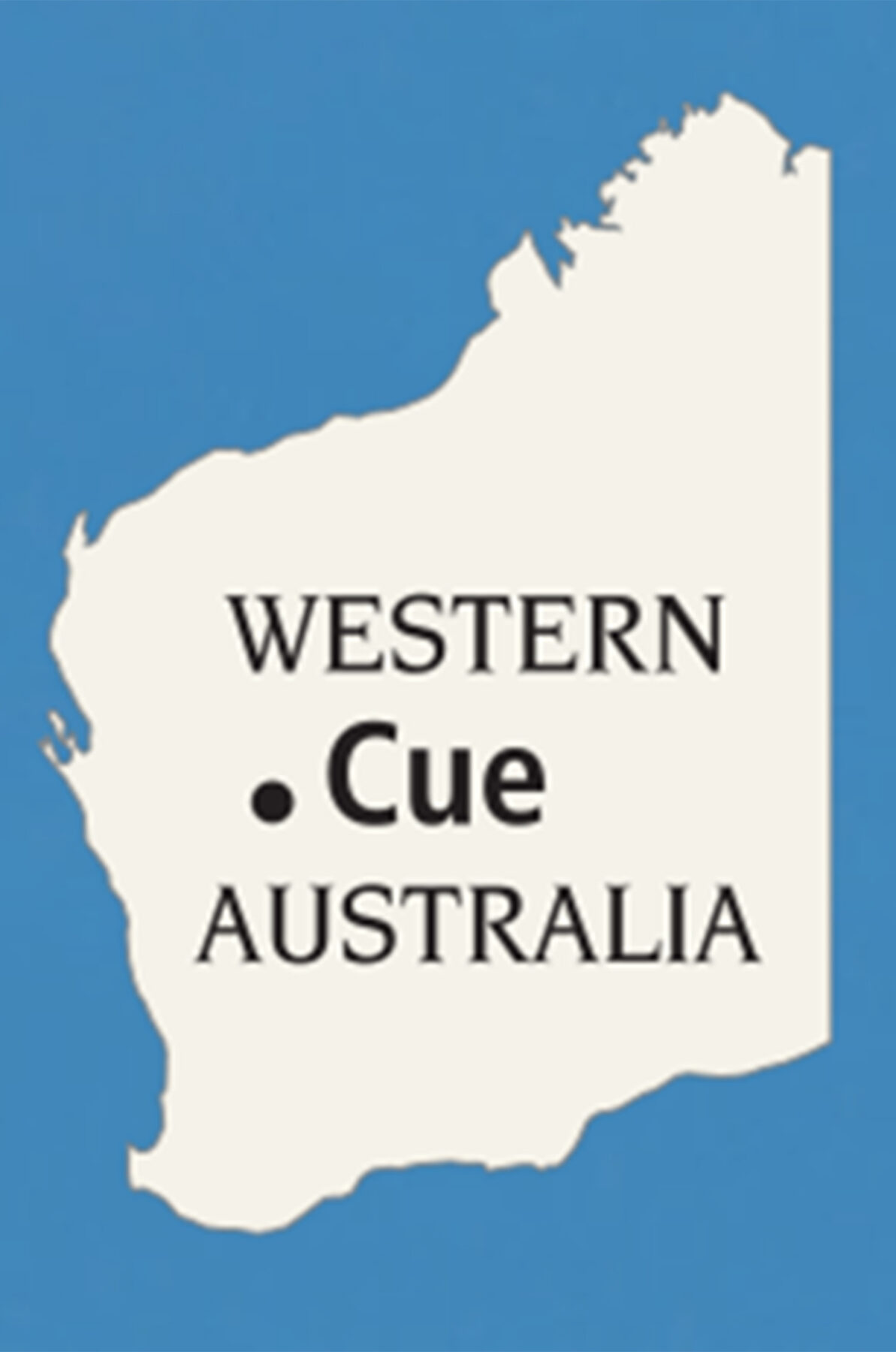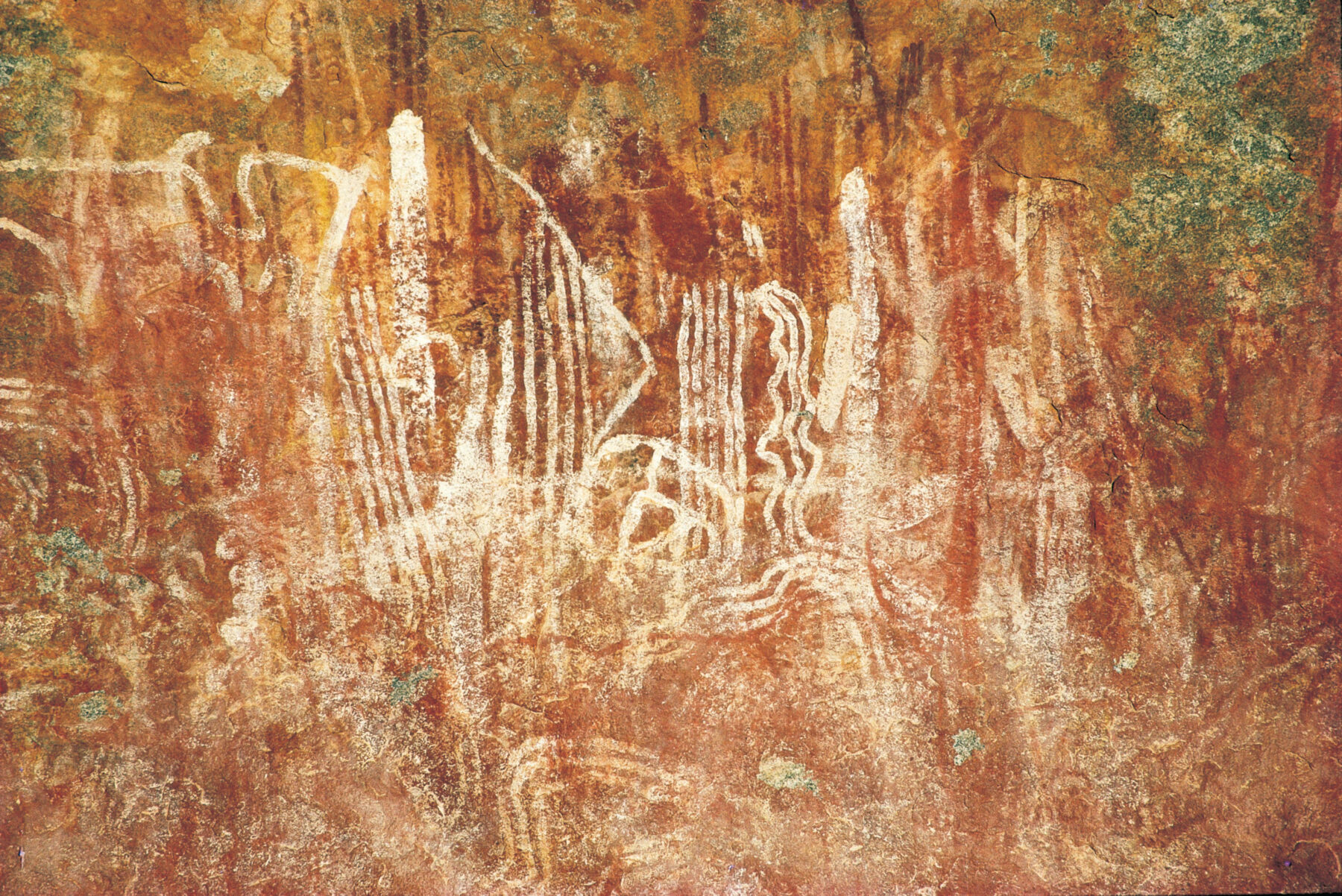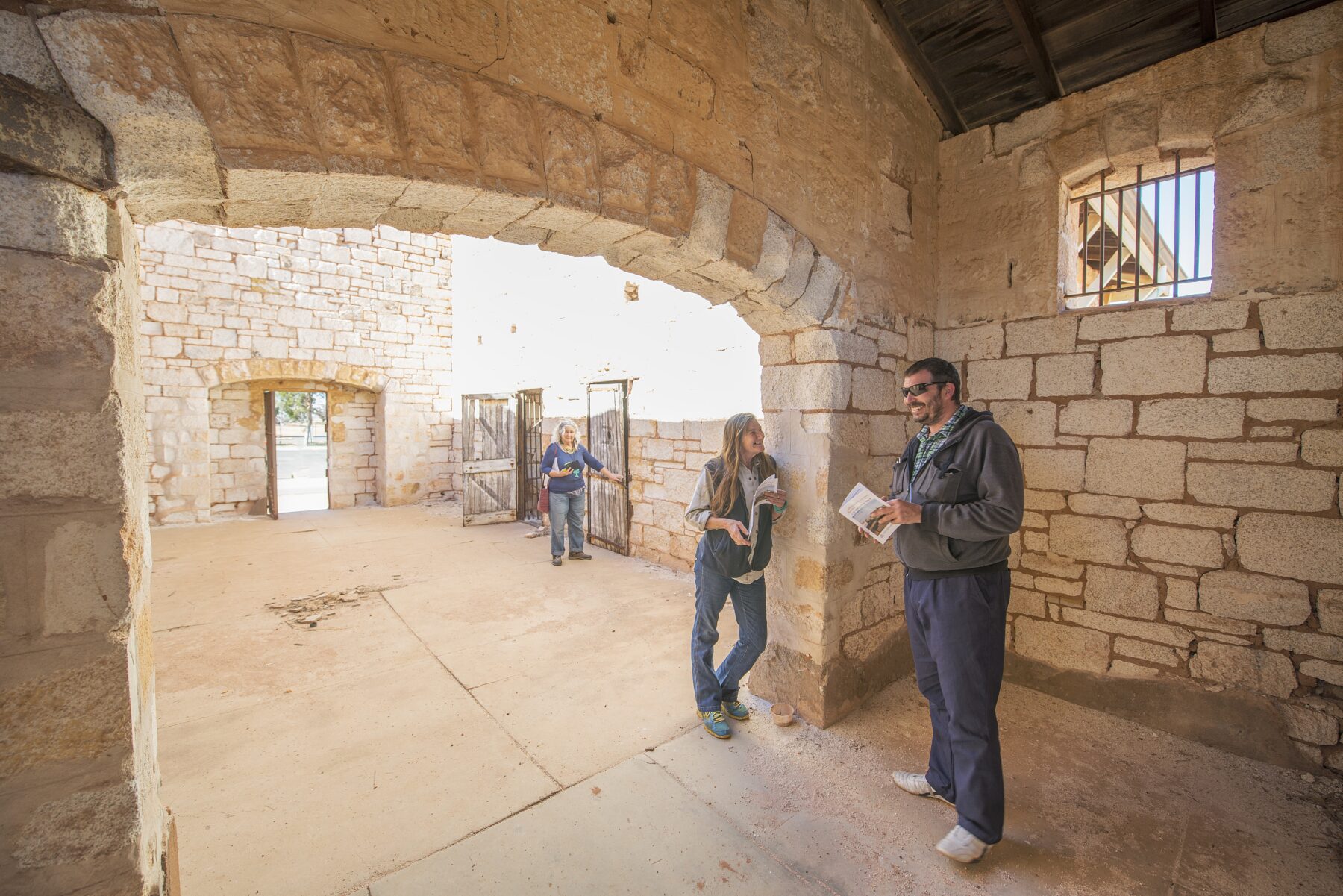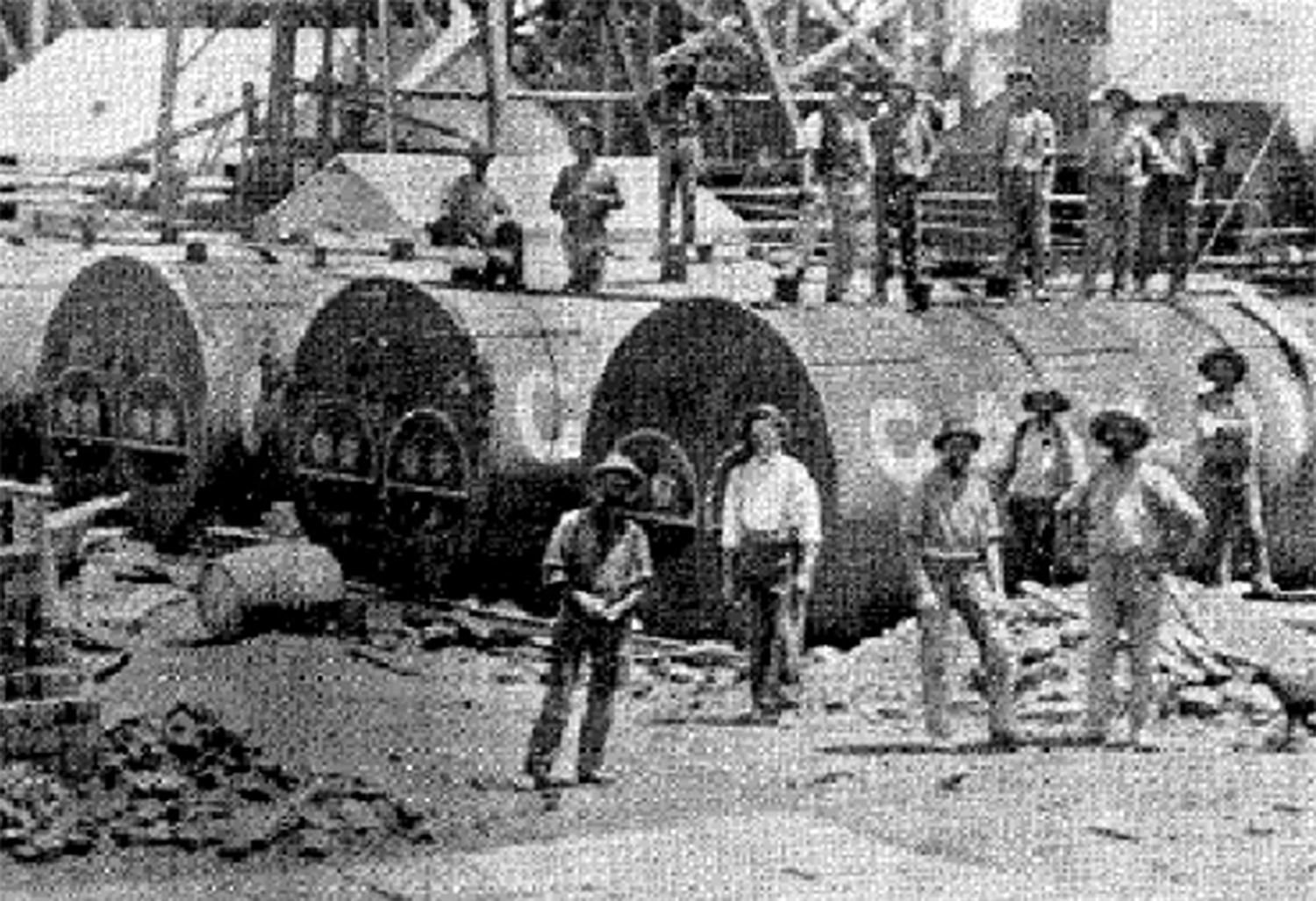A complete guide to Cue, WA

With a population of of just 215 in 2021, it’s hard to imagine this sleepy Western Australian town was once the thriving centre of the Murchison Gold Field. When May Vivienne published Travels in Western Australia in 1901, she wrote, “At last I saw the lights of Cue. Electric lights in the streets, horses and carts, the shrill whistle of the railway engine, boys calling out the evening papers…all told me that I had emerged from the ‘back blocks’ and was once more nearing the metropolis.”
Cue was established in the 1890s by miners determined to make their fortune on the rich gold reefs surrounding the town. Its population waxed and waned, depending on the changing fortunes of the gold industry, but at its height, Cue boasted a population of more than 10,000. By 1894, permanent buildings were constructed from locally quarried limestone slabs, suggesting that the “metropolis” was predicted to last for generations, if not centuries.
Today, these stone buildings – most notably the Gentlemen’s Club, Old Gaol, Courthouse, Police Station and Masonic Lodge – are easy to find (most are on the main street). The remote town is surrounded by the blood-red sand of WA’s Mid West region, as well as salt lakes and breakaways. Each spring, the district blooms with spectacular displays of wildflowers.

Location:
Cue is 642km north-east of Perth via the Great Northern Highway and 420km east of Geraldton.
Origin of Name:
In 1893, Cue was officially named after the prospector Tom Cue, who travelled to Nannine and registered a gold claim. Ironically, Tom Cue was not the person who discovered gold at the site, but he did find gold at what is now called Agnew.
Visitor Information :
Cue District Visitor Centre
72 Austin Street.
Useful Websites:
Places of interest

1. Masonic Lodge
In Dowley Street stands the Masonic Lodge, one of the few buildings in Cue not built from stone. The plaque outside details its history: “Built in 1899 of timber and galvanised iron with a pressed tin interior, this unusual building is said to be the largest corrugated iron structure in the Southern Hemisphere.” Monthly meetings of Masons were held here until the early 1970s. The lodge closed in 1979 and was later bought by the National Trust.
2. Band Rotunda
The band rotunda is a beautiful monument in Austin Street, built over the “Old Well”, which was sunk in 1893 and became the lifeblood of the town during the goldrush. The rotunda was built in 1904 and is dedicated to the pioneers of the Murchison region. The octagonal bandstand was once a popular meeting place. In the early years of the settlement, bands played here every Saturday night.
3. Cue Shire Office – Gentlemen’s Club
At the northern end of Austin Street is the Shire Office. This handsome stone building was financed by the London and Western Australian Investment Company and had 18 offices and two shops. In January 1901 the upper floor became home to the Murchison Club, used by Cue’s leading business, mining, pastoral and professional men. It later became known as the Gentlemen’s Club.
4. Ruins of Cue Hospital
Cue’s first hospital was a canvas and bough shed erected north of the town in July 1892 after an outbreak of typhoid fever. Three years later, a new hospital was built from local stone and boasted spacious wards and shady verandahs. The hospital closed in 1942 and fell into ruins. Several walls still stand, including the crumbling remains of the hospital crematorium’s chimney.
5. Aboriginal Art – Walga Rock

About 50km west of Cue is one of WA’s finest galleries of Aboriginal rock art. Of particular interest is a painting of a white, square-rigged sailing ship with two masts and square portholes – interestingly, this area is more than 300km from the sea. No accurate date can be placed on the art, but it was almost certainly painted before 1900.
6. Government Buildings
Impressive government buildings, built between 1895 and 1897 – including the Warden’s Court, old Post Office and Police Station – are found on Austin Street.
7. Old Gaol

The Cue Caravan Park now houses the Old Gaol that was built in 1896 to a design provided by the WA Architectural Department. It was not designed as a permanent gaol but rather as a temporary place to hold prisoners being transported to the larger centres on the coast. The gaol officially closed in 1914, but it was still used as a lock-up until the 1930s.

History
Before European settlement, the area was home to the Wajarri First Nations people.
Gold was discovered at Cue in 1892. Within days, 400 miners had arrived in the area.
The town of Cue was gazetted in 1893.
In 1894 Premier John Forrest visited Cue and promised to build a telegraph line, a railway and permanent government buildings. The telegraph was completed that year.
By 1895 another town – Day Dawn – was established south of Cue, close to the Great Fingall Mine (pictured).
By 1896 Cue and Day Dawn boasted three newspapers between them: The Murchison Miner, The Murchison Times and Day Dawn Gazette and The Murchison Advocate.
Cue Railway Station opened in 1897.
By 1900 Cue had a population of about 10,000.
The Great Fingall Mine at Day Dawn closed in 1918.
By 1933 there were fewer than 500 people living in and around Cue.
In 2006 Cue was classified by the National Trust.
The town won WA’s Tidy Towns award in 2006 and the Tidy Towns National Litter Prevention category in 2007.
Image credit: courtesy State Library of Victoria





